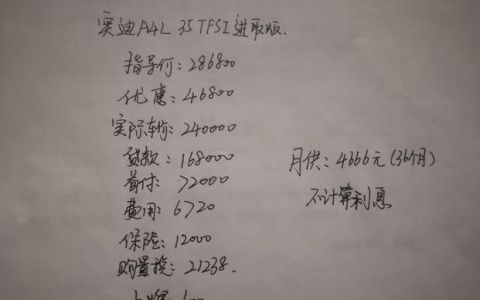此算法基本可以通用于所有麻将的平胡规则,即满足m * ABC + n * AAA + AA(其中m、n可为0)的胡牌公式,红黑字牌也可由此算法演变。
首先,我们要约定每张麻将都可以由一个数字表示,比如11表示一万,12表示二万,21表示一条,22表示二条,31表示一筒,32表示二筒……
即所有牌用两位数表示,表示万条筒的两位数个位为牌点,十位为牌类型,其它表示非字牌的两位数与牌类型相同,以下用一个枚举类定义:
import java.util.HashMap;import java.util.Map;/** * 麻将类型枚举 * * @author zkpursuit */public enum CardType { wan(1, "万"), tiao(2, "条"), tong(3, "筒"), dong(40, "东风"), nan(41, "南风"), xi(42, "西风"), bei(43, "北风"), zhong(44, "中"), fa(45, "发"), ban(46, "白板"); //类型 private final int value; //牌名 private final String name; private CardType(int value, String name) { this.value = value; this.name = name; } public int getValue() { return value; } public String getName() { return name; } private static final Map<Integer, String> numMap = new HashMap<>(); private static final Map<Integer, CardType> types = new HashMap<>(); private static final Map<Integer, String> typeNames = new HashMap<>(); static { numMap.put(1, "一"); numMap.put(2, "二"); numMap.put(3, "三"); numMap.put(4, "四"); numMap.put(5, "五"); numMap.put(6, "六"); numMap.put(7, "七"); numMap.put(8, "八"); numMap.put(9, "九"); CardType[] enums = CardType.values(); for (CardType cardType : enums) { types.put(cardType.getValue(), cardType); typeNames.put(cardType.getValue(), cardType.getName()); } } /** * 获取牌类型枚举 * * @param typeValue 牌类型值 * @return 牌类型枚举 */ public static final CardType getCardType(int typeValue) { return types.get(typeValue); } /** * 获取牌的类型名 * * @param typeValue 牌类型 * @return 牌类型名 */ public static final String getCardTypeName(int typeValue) { return typeNames.get(typeValue); } /** * 获取牌类型数值表示 * * @param card 牌号 * @return 牌类型数值表示 */ public static final int getCardTypeValue(int card) { if (card < 40) { return HandCards.getCardLeftValue(card); } return card; } /** * 将牌数据转换为现实中可读的牌 * * @param card 牌数据 * @return 现实中可读的牌 */ public static final String getCardName(int card) { if (card < 40) { int type = HandCards.getCardLeftValue(card); int point = HandCards.getCardRightValue(card); StringBuilder sb = new StringBuilder(); sb.append(numMap.get(point)); sb.append(getCardTypeName(type)); return sb.toString(); } return getCardTypeName(card); }}以上定义了各张牌的数字表示,接下来我们分析手牌的存储结构,手牌可以用一个数组表示,数组下标号能除尽10的数组元素为保留位,不用于存储任何数据。举例解释此数组存储牌的数据结构:
0号下标保留位
1~9号下标为万字牌牌点,其对应的数组元素为牌的张数
10号下标保留位
11~19号下标为条字牌牌点,其对应的数组元素为牌的张数
20号下标为保留位
21~29号下标为筒字牌牌点,其对应的数组元素为牌的张数
40~46号下标分别表示东、南、西、北、中、发、白的存储位。
根据以上的定义,则可以根据数组下标获得万条筒字牌的类型和牌点,(下标/10 + 1) 则为字牌类型,(下标%10) 则为字牌点数。
具体定义一个手牌类,里面定义了各种静态的换算函数,可参看注释。
/** * 手牌 * * @author zkpursuit */public class HandCards { /** * 获取牌号最左边的一位数,如果牌为筒、条、万,则返回值为牌类型数值 * * @param card 牌号 * @return 牌号从左至右第一位数(十位数) */ public final static int getCardLeftValue(int card) { return card / 10; } /** * 获取牌号最右边的一位数,如果牌为筒、条、万,则返回值为牌点数 * * @param card 牌号 * @return 牌号从右至左第一位数(个位数) */ public final static int getCardRightValue(int card) { return card % 10; } /** * 获取牌号最左边的一位数,如果牌为筒、条、万,则返回值为牌类型数值 * * @param idx 牌在归类数组中的索引位置 * @return 牌号从左至右第一位数(十位数) */ public final static int getCardLeftValueByClusterIndex(int idx) { return idx / 10 + 1; } /** * 获取牌号最右边的一位数,如果牌为筒、条、万,则返回值为牌点数 * * @param idx 牌在归类数组中的索引位置 * @return 牌号从右至左第一位数(个位数) */ public final static int getCardRightValueByClusterIndex(int idx) { return idx % 10; } /** * 根据牌号取得其所在的牌归类数组中的索引 * * @param card 牌号 * @return 牌归类数组中的索引 */ public final static int getClusterIndexByCard(int card) { int left = getCardLeftValue(card); int right = getCardRightValue(card); int idx = (left - 1) * 10 + right; return idx; } /** * 根据十位数和个位数确定牌在聚合数组中的索引位置 * * @param leftValue 十位数 * @param rightValue 个位数 * @return 聚合数组中的索引位置 */ public final static int getClusterIndex(int leftValue, int rightValue) { return (leftValue - 1) * 10 + rightValue; } /** * 归类牌<br> * 数组索引 / 10 + 1 表示牌类型<br> * 数组索引 % 10 表示牌点数<br> * 数组索引位置的值表示牌数量 */ private int[] cardClusterArray; /** * 起始有效的索引位置<br> * 第一个值不为0的索引位置<br> */ private int startIndex; /** * 归类牌数组的有效索引位置,因为有可能后面的位置全是0<br> * 此索引的后续索引位置的值全部为0,即最后一个值不为0的索引位置<br> */ private int lastIndex; /** * 所有的牌数量 */ private int cardTotals; /** * 构造方法 */ public HandCards() { cardClusterArray = new int[40]; startIndex = 1000; lastIndex = -1; cardTotals = 0; } /** * 构造方法 * * @param cards 未归类的牌数组 */ public HandCards(int[] cards) { this(); if (cards != null) { setCards(cards); } } /** * 重置数据 */ public void reset() { if (cardTotals != 0) { int len = getClusterValidLength(); for (int i = 0; i < len; i++) { cardClusterArray[i] = 0; } } startIndex = 1000; lastIndex = -1; cardTotals = 0; } /** * 清除数据 */ public void clear() { reset(); } /** * 重置数据并以传入的牌数据再次初始化数据 * * @param cards 牌数据 */ public final void setCards(int[] cards) { reset(); for (int card : cards) { addCard(card); } } /** * 添加num张牌 * * @param card 添加的牌号 * @param num 添加的数量 * @return true添加成功;false添加失败 */ public boolean addCard(int card, int num) { int idx = getClusterIndexByCard(card); int lastNum = cardClusterArray[idx] + num; if (lastNum > 4) { return false; } cardClusterArray[idx] = lastNum; if (idx > lastIndex) { lastIndex = idx; } if (idx < startIndex) { startIndex = idx; } cardTotals += num; return true; } /** * 添加一张牌 * * @param card 牌号 * @return true添加成功;false添加失败 */ public boolean addCard(int card) { return addCard(card, 1); } /** * 添加牌集合 * * @param cards 牌集合,比如 [11, 23, 33, 33, 33, 34] * @return true添加成功,只要有一张添加失败则全部失败 */ public boolean addCards(int... cards) { for (int card : cards) { int idx = getClusterIndexByCard(card); int lastNum = cardClusterArray[idx] + 1; if (lastNum > 4) { return false; } } for (int card : cards) { addCard(card); } return true; } /** * 移除num张牌 * * @param card 移除的牌号 * @param num 移除的数量 * @return true移除成功;false移除失败 */ public boolean removeCard(int card, int num) { int idx = getClusterIndexByCard(card); if (cardClusterArray[idx] < num) { return false; } cardClusterArray[idx] -= num; if (cardClusterArray[idx] == 0) { if (idx == startIndex) { startIndex = 1000; for (int i = idx; i < cardClusterArray.length; i++) { if (cardClusterArray[i] > 0) { startIndex = i; break; } } } if (lastIndex == idx) { int start = startIndex; if (start >= cardClusterArray.length) { start = 0; } lastIndex = -1; for (int i = idx; i >= start; i--) { if (cardClusterArray[i] > 0) { lastIndex = i; break; } } } } cardTotals -= num; return true; } /** * 移除一张牌 * * @param card 牌号 * @return true移除成功;false移除失败 */ public boolean removeCard(int card) { return removeCard(card, 1); } /** * 移除牌号对应的所有牌 * * @param card 牌号 * @return true移除成功;false移除失败 */ public boolean removeCardOfAll(int card) { int num = getCardNum(card); if (num >= 0) { return removeCard(card, num); } return true; } /** * 移除牌 * * @param cards 需要移除的牌 * @return true表示移除成功,只要有一张牌移除失败则整个失败 */ public boolean removeCards(int... cards) { for (int card : cards) { int idx = getClusterIndexByCard(card); if (cardClusterArray[idx] < 1) { return false; } } for (int card : cards) { removeCard(card); } return true; } /** * 是否有指定的牌 * * @param card 牌号 * @return true表示存在 */ public boolean hasCard(int card) { return getCardNum(card) > 0; } /** * 获取牌号对应的数量 * * @param card 牌号 * @return 牌号对应的数量 */ public int getCardNum(int card) { int idx = getClusterIndexByCard(card); return cardClusterArray[idx]; } /** * 获取归类的牌数据,整除10的索引位置为保留位,不参与任何实际运算<br> * 数组索引从0开始,有效长度(后面全部为0)结束<br> * 此数组为数据副本,其中的任何数据变动都不会改变原数组<br> * 数组索引 / 10 + 1 表示牌类型<br> * 数组索引 % 10 表示牌点数<br> * * @return 归类的牌数据 */ public int[] getCardClusterArray() { int[] array = new int[getClusterValidLength()]; System.arraycopy(cardClusterArray, 0, array, 0, array.length); return array; } /** * 根据提供的索引位置获取牌数量 * * @param idx 牌归类数组中的索引位置 * @return 牌数量 */ public int getCardNumByClusterIndex(int idx) { return cardClusterArray[idx]; } /** * 根据索引位置定位对应的牌 * * @param idx 归类牌数组中的索引位置 * @return -1表示找不到对应的牌,否则返回牌号 */ public int getCardByClusterIndex(int idx) { if (cardClusterArray[idx] <= 0) { return -1; } int left = getCardLeftValueByClusterIndex(idx); int right = getCardRightValueByClusterIndex(idx); return left * 10 + right; } /** * 归类牌数组中起始有效索引 * * @return 起始有效索引,第一个值不为0的索引位置 */ public int getClusterValidStartIndex() { if (cardTotals == 0) { return 1; } return startIndex; } /** * 归类牌数组中最终的有效索引 * * @return 最终有效索引,其后的值全为0 */ public int getClusterValidEndIndex() { return lastIndex; } /** * 归类牌数组的有效长度<br> * 有效的起始索引到有效的最后索引之前的长度<br> * * @return 有效长度,因为归类数组中后面可能有很多无效的0 */ public int getClusterValidLength() { return lastIndex + 1; } /** * 所有牌的张数 * * @return 总张数 */ public int getCardTotals() { return cardTotals; } /** * 获取所有的牌数据,未归类 * * @return 未归类的牌数据,两位数的牌号数组 */ public int[] getCards() { if (cardTotals <= 0) { return null; } int len = getClusterValidLength(); int[] cards = new int[cardTotals]; int idx = 0; for (int i = getClusterValidStartIndex(); i < len; i++) { int left = getCardLeftValueByClusterIndex(i); int right = getCardRightValueByClusterIndex(i); int count = cardClusterArray[i]; int card = left * 10 + right; for (int j = 0; j < count; j++) { cards[idx] = card; idx++; } } return cards; } @Override public HandCards clone() { HandCards copy = new HandCards(); copy.cardTotals = this.cardTotals; copy.lastIndex = this.lastIndex; copy.startIndex = this.startIndex; if (cardClusterArray != null) { int[] copyCardClusterArray = new int[cardClusterArray.length]; System.arraycopy(cardClusterArray, 0, copyCardClusterArray, 0, cardClusterArray.length); copy.cardClusterArray = copyCardClusterArray; } return copy; }}准备工作都做好了,怎么使用上面定义的数据结构实现平胡算法呢?平胡满足m * ABC + n * AAA + AA(其中m、n可为0)的胡牌公式,分析此公式,AA表示一对牌,则算法必然需要分析手牌中是否含有一对牌,ABC表示三张相同类型且连续的牌,AAA表示三张相同类型且牌点也相同的牌。
依据公式,我们用递归思路编写一个平胡胡牌算法(其中包含简单的测试用例):
import java.util.Arrays;/** * * @author zkpursuit */public final class AI { /** * 递归方式判断平胡 * * @param cardClusterArray 牌号和牌数量的簇集对象集合 * @param len 所有牌数量 * @return true表示可以胡牌 */ private static boolean isPingHu(int[] cardClusterArray, int startIndex, int len) { if (len == 0) { return true; } int i; if (len % 3 == 2) { //移除一对(两张牌),胡牌中必须包含一对 for (i = startIndex; i < cardClusterArray.length; i++) { if (cardClusterArray[i] >= 2) { cardClusterArray[i] -= 2; if (AI.isPingHu(cardClusterArray, startIndex, len - 2)) { return true; } cardClusterArray[i] += 2; } } } else { //是否是顺子 int loopCount = cardClusterArray.length - 2; for (i = startIndex; i < loopCount; i++) { int idx1 = i + 1; int idx2 = i + 2; int type1 = HandCards.getCardLeftValueByClusterIndex(i); int type2 = HandCards.getCardLeftValueByClusterIndex(idx1); int type3 = HandCards.getCardLeftValueByClusterIndex(idx2); if (cardClusterArray[i] > 0 && cardClusterArray[idx1] > 0 && cardClusterArray[idx2] > 0 && type1 < 4 && type2 < 4 && type3 < 4) { cardClusterArray[i] -= 1; cardClusterArray[idx1] -= 1; cardClusterArray[idx2] -= 1; if (AI.isPingHu(cardClusterArray, startIndex, len - 3)) { return true; } cardClusterArray[i] += 1; cardClusterArray[idx1] += 1; cardClusterArray[idx2] += 1; } } //三个一样的牌(暗刻) for (i = startIndex; i < cardClusterArray.length; i++) { if (cardClusterArray[i] >= 3) { cardClusterArray[i] -= 3; if (AI.isPingHu(cardClusterArray, startIndex, len - 3)) { return true; } cardClusterArray[i] += 3; } } } return false; } /** * 递归方式判断平胡 * * @param mycards 手牌 * @return true表示可以胡牌 */ public static boolean isPingHu(HandCards mycards) { int[] cardClusterArray = mycards.getCardClusterArray(); int totals = mycards.getCardTotals(); if (totals % 3 != 2) { return false; } return AI.isPingHu(cardClusterArray, mycards.getClusterValidStartIndex(), totals); } public static void main(String[] args) { HandCards handCards = new HandCards(new int[]{11, 12, 13, 22, 23, 24, 33, 33, 33, 36, 36}); System.out.println(Arrays.toString(handCards.getCardClusterArray())); System.out.println(Arrays.toString(handCards.getCards())); for (int i = handCards.getClusterValidStartIndex(); i <= handCards.getClusterValidEndIndex(); i++) { int card = handCards.getCardByClusterIndex(i); if (card > 0) { int num = handCards.getCardNum(card); System.out.println(num + "张 " + CardType.getCardName(card)); } } boolean bool = isPingHu(handCards); System.out.println("是否胡牌:" + bool); }}原文链接:***/zkpursuit/blog/3046187
版权声明:本文来自用户投稿,不代表【爱生活网】立场,本平台所发表的文章、图片属于原权利人所有,因客观原因,或会存在不当使用的情况,非恶意侵犯原权利人相关权益,敬请相关权利人谅解并与我们联系(邮箱:youzivr@vip.qq.com)我们将及时处理,共同维护良好的网络创作环境。







